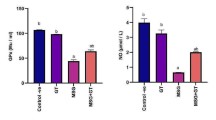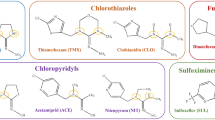Abstract
Epilepsy affects 50 million people around the world, and the patients experience cognitive, psychological and social consequences. Despite the considerable quantity of antiepileptic drugs available, 30% of patients still suffer in seizure. Therefore, the advance in therapeutic alternatives is mandatory. Resveratrol has been attracting the attention of many researchers because of its pharmacological potential. However, despite its neuroprotective and anti-epileptic effects, clinical resveratrol use is impaired by its low bioavailability. Here, we applied the supercritical fluid micronization technology (SEDS) to overcome this deficit, and investigated the anticonvulsant potential of micronized resveratrol in a PTZ-induced seizure model in adult zebrafish (Danio rerio). SEDS permits obtaining significantly reduced particle size with a fine size distribution in comparison with the starting material. It can improve the pharmacotherapeutic efficacy. Our data showed that micronized resveratrol decreased the occurrence of the tonic–clonic seizure stage and slowed the development of the seizures in a similar manner of diazepam. Non-processed resveratrol was not able to protect the animals. Furthermore, diazepam decreased the locomotion and exploratory behavior. Differently from diazepam, the micronized resveratrol did not induce behavioral adverse events. In addition, our data showed that the PTZ-induced seizures increased the c-fos transcript levels following the neural excitability. However, the increase in c-fos levels was prevented by micronized resveratrol. In conclusion, our results demonstrate that the micronized resveratrol shows anticonvulsant effect, like the classical antiepileptic drug diazepam in a PTZ-induced seizure model. Excitingly, different from diazepam, micronized resveratrol did not provoke behavioral adverse events.






Similar content being viewed by others
References
Devinsky O, Vezzani A, O’Brien TJ et al (2018) Epilepsy. Nat Rev Dis Primers 4:18024
Fisher RS, Acevedo C, Arzimanoglou A et al (2014) ILAE official report: a practical clinical definition of epilepsy. Epilepsia 55:475–482
World Health Organization (2020) https://www.who.int/news-room/fact-sheets/detail/epilepsy
Singh A, Trevick S (2016) The epidemiology of global epilepsy. Neurol Clin 34:837–847. https://doi.org/10.1016/j.ncl.2016.06.015
Berg AT (2006) Defining intractable epilepsy. Adv Neurol 97:5–10
Berman AY, Motechin RA, Wiesenfeld MY, Holz MK (2017) The therapeutic potential of resveratrol: a review of clinical trials. npj Precis Oncol 1. doi:https://doi.org/10.1038/s41698-017-0038-6
E. H. Siemann, L. L. Creasy concentration of the phytoalexin resveratrol in wine
Mishra V, Shuai B, Kodali M, et al (2015) Resveratrol treatment after status epilepticus restrains neurodegeneration and abnormal neurogenesis with suppression of oxidative stress and inflammation. Sci Rep 5. doi:10.1038/srep17807
Wu Z, Xu Q, Zhang L et al (2009) Protective effect of resveratrol against kainate-induced temporal lobe epilepsy in rats. Neurochem Res 34:1393–1400. https://doi.org/10.1007/s11064-009-9920-0
Cottart C-H, Nivet-Antoine V, Laguillier-Morizot C, Beaudeux J-L (2010) Resveratrol bioavailability and toxicity in humans. Mol Nutr Food Res 54:7–16. https://doi.org/10.1002/mnfr.200900437
Carrilho E, Tavares MCH, Lanças FM (2003) Fluidos supercríticos em química analítica. II. Cromatografia com fluido supercrítico: instrumentação. Química Nova 26:687–693. https://doi.org/10.1590/S0100-40422003000500012
Aguiar GPS, Arcari BD, Chaves LMPC et al (2018) Micronization of trans-resveratrol by supercritical fluid: dissolution, solubility and in vitro antioxidant activity. Ind Crops Prod 112:1–5. https://doi.org/10.1016/j.indcrop.2017.11.008
Kurniawansyah F, Quachie L, Mammucari R, Foster NR (2017) Improving the dissolution properties of curcumin using dense gas antisolvent technology. Int J Pharm 521:239–248. https://doi.org/10.1016/j.ijpharm.2017.02.018
Decui L, Garbinato CLL, Schneider SE et al (2020) Micronized resveratrol shows promising effects in a seizure model in zebrafish and signalizes an important advance in epilepsy treatment. Epilepsy Res 159:106243
Aguiar GPS, Boschetto DL, Chaves LMPC et al (2016) Trans-resveratrol micronization by SEDS technique. Ind Crops Prod 89:350–355
Dal Magro C, Aguiar GPS, Veneral JG et al (2017) Co-precipitation of trans -resveratrol in PHBV using solution enhanced dispersion by supercritical fluids technique. J Supercrit Fluids 127:182–190
Bevilaqua F, Sachett A, Chitolina R et al (2020) A mixture of fipronil and fungicides induces alterations on behavioral and oxidative stress parameters in zebrafish. Ecotoxicology 29:140–147
Siebel AM, Menezes FP, Capiotti KM et al (2015) Role of adenosine signaling on pentylenetetrazole-induced seizures in zebrafish. Zebrafish 12:127–136
Bertoncello KT, Aguiar GPS, Oliveira JV, Siebel AM (2018) Micronization potentiates curcumin’s anti-seizure effect and brings an important advance in epilepsy treatment. Sci Rep 8. doi:10.1038/s41598-018-20897-x
Siebel AM, Menezes FP, da Costa SI et al (2015) Rapamycin suppresses PTZ-induced seizures at different developmental stages of zebrafish. Pharmacol Biochem Behav 139:163–168
Dzah CS, Duan Y, Zhang H et al (2020) Enhanced screening of key ultrasonication parameters: total phenol content and antioxidant activity assessment of Tartary buckwheat (Fagopyrum tataricum) water extract. Sep Sci Technol 55:3242–3251
Harasym J, Satta E, Kaim U (2020) Ultrasound treatment of buckwheat grains impacts important functional properties of resulting flour. Molecules 25:3012
Leclercq K, Afrikanova T, Langlois M et al (2015) Cross-species pharmacological characterization of the allylglycine seizure model in mice and larval zebrafish. Epilepsy Behav 45:53–63
Tomaciello F, Leclercq K, Kaminski RM (2016) Resveratrol lacks protective activity against acute seizures in mouse models. Neurosci Lett 632:199–203
Baraban SC, Taylor MR, Castro PA, Baier H (2005) Pentylenetetrazole induced changes in zebrafish behavior, neural activity and c-fos expression. Neuroscience 131:759–768
van der Vaart M, Svoboda O, Weijts BG et al (2017) Mecp2 regulates tnfa during zebrafish embryonic development and acute inflammation. Dis Models Mech 10:1439–1451
Tang R, Dodd A, Lai D et al (2007) Validation of zebrafish (Danio rerio) reference genes for quantitative Real-time RT-PCR normalization. Acta Biochim Biophys Sin 39:384–390
Mei J, Zhang Q-Y, Li Z et al (2008) C1q-like inhibits p53-mediated apoptosis and controls normal hematopoiesis during zebrafish embryogenesis. Dev Biol 319:273–284
Livak KJ, Schmittgen TD (2001) analysis of relative gene expression data using Real-Time Quantitative PCR and the 2−ΔΔCT method. Methods 25:402–408
Rice WR (1989) Analyzing tables of statistical tests. Evolution 43:223
Blardi P, De Lalla A, Volpi L, Di Perri T (1999) Stimulation of endogenous adenosine release by oral administration of quercetin and resveratrol in man. Drugs Exp Clin Res 25:105–110
Gupta YK, Chaudhary G, Srivastava AK (2002) Protective effect of resveratrol against pentylenetetrazole-induced seizures and its modulation by an adenosinergic system. Pharmacology 65:170–174
Boison D (2016) Adenosinergic signaling in epilepsy. Neuropharmacology 104:131–139
Borea PA, Gessi S, Merighi S, Varani K (2016) Adenosine as a multi-signalling guardian angel in human diseases: When, where and how does it exert its protective effects? Trends Pharmacol Sci 37:419–434
Dasgupta B, Milbrandt J (2007) Resveratrol stimulates AMP kinase activity in neurons. Proc Natl Acad Sci 104:7217–7222
Fröjdö S, Cozzone D, Vidal H, Pirola L (2007) Resveratrol is a class IA phosphoinositide 3-kinase inhibitor. Biochem J 406:511–518
Ghosh HS, McBurney M, Robbins PD (2010) SIRT1 Negatively regulates the mammalian target of rapamycin. PLoS ONE 5:e9199
Liu M, Wilk SA, Wang A et al (2010) Resveratrol inhibits mTOR signaling by promoting the interaction between mTOR and DEPTOR. J Biol Chem 285:36387–36394
Wong M (2013) A critical review of mTOR inhibitors and epilepsy: from basic science to clinical trials. Expert Rev Neurother 13:657–669
Li Z, You Z, Li M et al (2017) Protective effect of resveratrol on the brain in a rat model of epilepsy. Neurosci Bull 33:273–280
Lin X, Itoga CA, Taha S et al (2018) c-Fos mapping of brain regions activated by multi-modal and electric foot shock stress. Neurobiol Stress 8:92–102
Chuang Y-C, Chen S-D, Jou S-B et al (2019) Sirtuin 1 regulates mitochondrial biogenesis and provides an endogenous neuroprotective mechanism against seizure-induced neuronal cell death in the hippocampus following status epilepticus. Int J Mol Sci 20:3588
Hussein AM, Eldosoky M, El-Shafey M et al (2019) Effects of GLP-1 receptor activation on a pentylenetetrazole—kindling rat model. Brain Sci 9:108
Wang R-F, Xue G-F, Hölscher C et al (2018) Post-treatment with the GLP-1 analogue liraglutide alleviate chronic inflammation and mitochondrial stress induced by Status epilepticus. Epilepsy Res 142:45–52
Springer C, Nappe TM (2020) Anticonvulsants toxicity. In: StatPearls. StatPearls Publishing, Treasure Island (FL)
Funding
This work was supported by Fundação de Amparo à Pesquisa e Inovação do Estado de Santa Catarina (FAPESC 06/2017, Grant No. 2019TR55), Coordenação de Aperfeiçoamento de Pessoal de Nível Superior (CAPES), Conselho Nacional de Desenvolvimento Científico e Tecnológico - Brazil (PIBIC/CNPq), Estado de Santa Catarina and Universidade Comunitária da Região de Chapecó (Unochapecó).
Author information
Authors and Affiliations
Corresponding author
Additional information
Publisher's Note
Springer Nature remains neutral with regard to jurisdictional claims in published maps and institutional affiliations.
Electronic supplementary material
Below is the link to the electronic supplementary material.
Rights and permissions
About this article
Cite this article
Almeida, E.R., Lima-Rezende, C.A., Schneider, S.E. et al. Micronized Resveratrol Shows Anticonvulsant Properties in Pentylenetetrazole-Induced Seizure Model in Adult Zebrafish. Neurochem Res 46, 241–251 (2021). https://doi.org/10.1007/s11064-020-03158-0
Received:
Revised:
Accepted:
Published:
Issue Date:
DOI: https://doi.org/10.1007/s11064-020-03158-0




